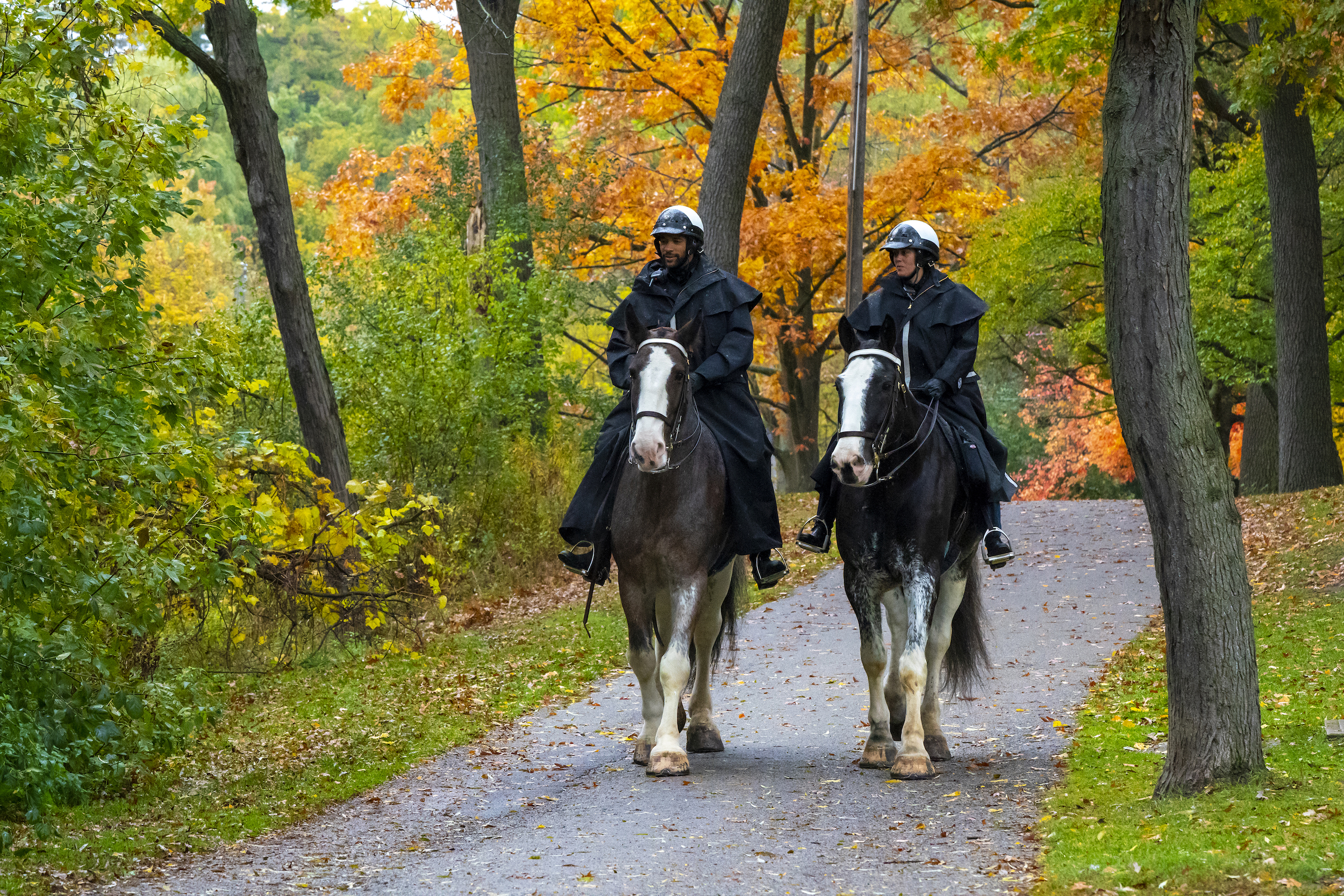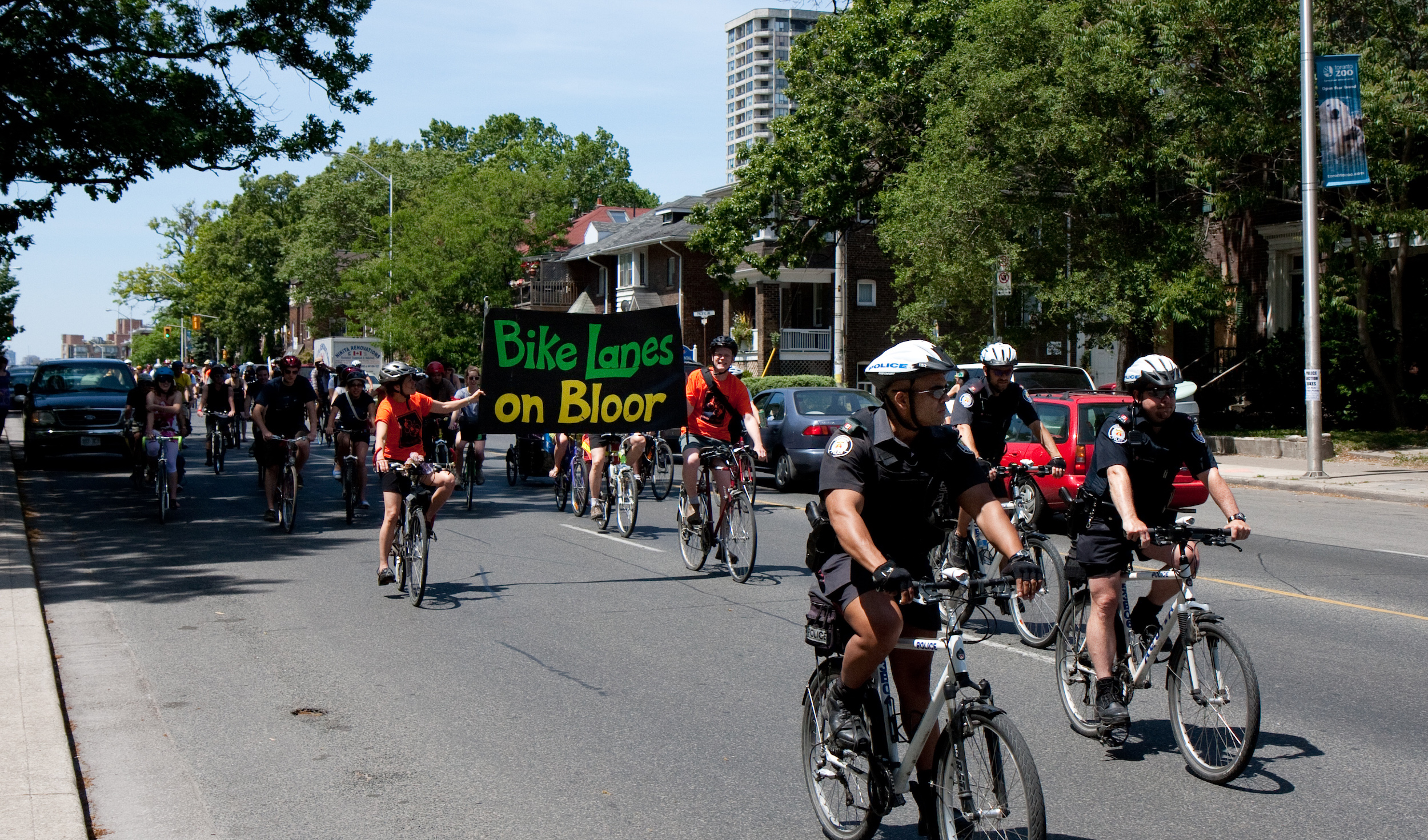
The Narwhal picks up four Canadian Association of Journalists award nominations
From investigative reporting to stunning photography, we’ve been recognized with four 2024 CAJ Awards nods...
Summer in Toronto brings one of our stupidest rituals: a billion-dollar police force mobilizing against cyclists in High Park. Once again, Toronto Police have been handing out tickets to cyclists that go faster than 20 kilometres per hour or fail to obey stop signs in the west end park. For whatever reason — maybe because an officer who rolled through a stop sign himself hit a cyclist with his cruiser — this year seems particularly contentious. One group of cycling advocates is trying to meet with Mayor John Tory to discuss a fix, while another is planning a protest ride this Thursday night.
The police crackdown apparently comes at the bequest of locals who are tired of guys in spandex careening down shared paths. But while I’m sure that park users feel unsafe because of a few fast bikes, I dispute that they’re actually in much danger. According to Toronto Police data, just 15 pedestrians were hit by cyclists in Toronto between 2006 and 2013, none fatally. In the same time period, the number of pedestrians killed by a driver was 212.
Three people were hit by different drivers on Wednesday morning as I wrote this, two ending up with serious injuries. That’s just one reason the annual blitz on bicycles is a colossal waste of time and money.
Another is the record-breaking heat smothering Toronto, and the world, which should make emissions-free transportation a policy priority. But Tory said in July that he supports police action in High Park, claiming that if a cyclist were to hit a pedestrian, “some of you would be saying ‘where were the authorities…?’ ” Meanwhile, despite his lip-service to the so-called “Vision Zero” ideal for pedestrian deaths, the mayor of nearly eight years has failed to oversee any meaningful drop in those fatalities, or to criticize the police force for not doing more to prevent them.
On paper, Toronto’s climate mitigation goal is that 75 per cent of trips under five kilometres are done on foot, bike or transit by 2030. On the ground, the city is so hostile to cyclists and pedestrians that it’s essentially pushing people into fossil-fuel powered vehicles.

Ten years ago, Toronto Police disbanded their traffic enforcement squad — and seemed to stop enforcing traffic rules on a regular basis. In 2019, the Toronto Star reported that ticketing for driving offences fell sharply after the squad was disbanded, hitting a record low that year: a 22 per cent drop in charges since 2014. The result, according to the Star, was a spike in collisions — an increase from 60,000 in 2012 to almost 80,000 in 2018.
The police have reinstated a traffic unit, but the real threat to pedestrians — dangerous driving — hasn’t declined. The lowest number of fatalities in the last decade was 21, and that was during 2020, the year of lockdowns. The highest was 44, in 2016. This year, we’re at 18, with over a third of the year left to go.
Most people are hit in Scarborough, Etobicoke and other areas of the city with wide roads and poor pedestrian infrastructure, but nowhere is safe. Grandparents Fatima and Valdemar Avila were struck and killed in the High Park neighbourhood last fall. (I can’t tell you how many pedestrians were hit by cyclists since 2013, since Toronto Police told The Narwhal collisions between cyclists and pedestrians are no longer considered “collisions,” but “incidents,” with data available only through a freedom of information request.)
One could argue that it’s a case of squeaky wheels: that High Park patrons simply spoke up and got action. But a few years back, soon after becoming a parent, I filled out the Toronto Police driving complaint form after drivers sped through the crosswalk at the top of my street a number of times. I got a call back just once, from an officer who said I’d need to be able to identify the driver in a photo lineup, even though I had included the car’s licence plate number. This week, Toronto Police told The Narwhal that it’s possible to send a letter to a vehicle’s owner without a visual identification.

Advocacy isn’t the problem. Cyclists lobbied for bike lanes on Bloor Street and Danforth Avenue for decades, but it took a highly contagious virus forcing more people off of transit and onto bikes to make them happen. And while some of the temporary lanes installed because of COVID-19 have been made permanent, that guarantees nothing, given Toronto’s history.
Council is already clawing back pandemic-era ActiveTO sites: in June, Blue Jays president Mark Shapiro complained that bike and pedestrian lanes were annoying to fans heading to Rogers Centre. Within weeks, city council voted to close Lake Shore Boulevard around the stadium less often — nevermind that Rogers owns the Jays and Tory is a former Rogers executive and current member of the family’s advisory committee. Or that encouraging people to take Go Transit or TTC to games would uphold the city’s supposed climate commitments.
Certainly, some cyclists in High Park are jerks, just like some drivers and humans at large. But this annual show of expensive, pointless force in High Park isn’t making anyone safer. If Toronto Police and city council insist on the spectacle of ticketing those on two wheels instead of four, the city’s pedestrian deaths — and greenhouse gas emissions — will never go down.
Get the inside scoop on The Narwhal’s environment and climate reporting by signing up for our free newsletter. On March 17, federal Conservative Leader Pierre Poilievre...
Continue reading
From investigative reporting to stunning photography, we’ve been recognized with four 2024 CAJ Awards nods...

The Narwhal is expanding its reach on video platforms like YouTube and TikTok. First up?...

Locals in the small community of Arborg worry a new Indigenous-led protected area plan would...
